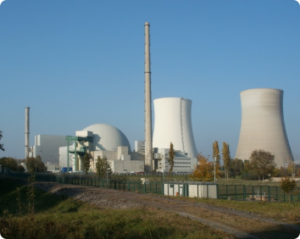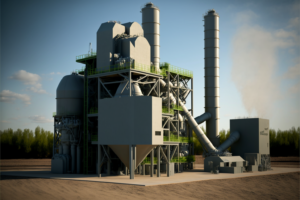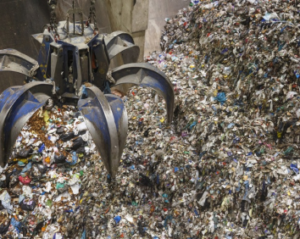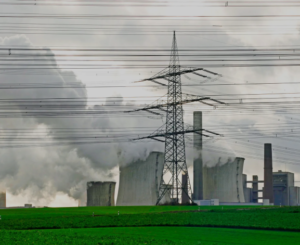Introduction
Waste is a pressing global issue that affects everyone – individuals, communities, and entire ecosystems. However, it is also an opportunity to tap into a valuable and untapped resource and turn it into a source of energy. This is where waste-to-energy (WtE) transformation comes in. WtE is the process of converting waste materials into usable forms of energy such as heat, electricity, and fuel. This not only helps to reduce the amount of waste that is sent to landfills and incinerators but also provides a renewable and sustainable source of energy. In this blog post, we will take a step-by-step journey through the WtE transformation process, from waste assessment to energy generation.
Step 1: Waste Assessment and Segregation and Transportation
The first step in the WtE transformation process is to assess and segregate waste. This involves understanding the types and composition of waste generated in a particular area or community. By knowing what materials are present, it becomes easier to determine the most appropriate way to process waste into usable energy. It is also important to segregate waste at the source for effective WtE processing. This can be achieved through the use of technological solutions such as advanced sorting and segregation systems.
Step 2: Design and Implementation
The second step is designing and implementing an optimized waste collection system. This system needs to be efficient to ensure maximum waste pickup and safe so that dangerous and toxic materials are not released into the environment. Technology integration can also be helpful for waste collection efficiency. The process of transporting waste to a WtE facility should also be taken into consideration to ensure safe and environmentally friendly transportation.
Step 3: Waste-to-Energy Conversion Technologies
There are several different WtE conversion methods, including incineration, gasification, pyrolysis, and more. Each of these methods uses different processes to turn waste into energy, with different end products and efficiency levels. Choosing the best option for a particular type of waste requires assessing the suitability of WtE technologies for each case.
Waste-to-Energy (WtE) conversion technologies play a crucial role in transforming waste into usable forms of energy. There are several different WtE conversion methods, including incineration, gasification, pyrolysis, and more. Incineration involves the combustion of waste materials at high temperatures, converting them into heat and electricity. This method is effective for mixed municipal solid waste and generates a significant amount of energy. However, it can produce emissions and requires careful handling of air pollutants.
Gasification is a process that converts solid or liquid waste into a synthetic gas or syngas. The syngas can be combusted to produce heat and electricity or further refined to produce various fuels. Gasification offers higher energy efficiency and lower emissions compared to incineration, making it a more environmentally-friendly option.
Pyrolysis is a thermal decomposition process that converts organic waste into gas, oil, and char. The gas and oil obtained can be used as fuel or further processed, while the char can be used as a solid fuel. Pyrolysis has the advantage of producing higher-quality fuel products and reducing greenhouse gas emissions.
Each WtE technology has its own working principles and benefits. Incineration provides a reliable and well-established method for waste disposal and energy generation. Gasification offers greater flexibility in terms of waste types and can produce high-quality syngas. Pyrolysis focuses on the production of valuable fuels and reducing environmental impacts.
The suitability of WtE technologies for different waste types is an important consideration. Some technologies may be better suited for certain waste streams, such as incineration for mixed municipal solid waste and gasification for biomass or industrial waste. Evaluating the waste composition and characteristics can help determine the most appropriate WtE technology for effective and efficient conversion. Additionally, advancements in WtE technologies continue to expand the range of waste types that can be effectively converted into energy.
Step 4: Environmental Impact, Emission Control, and Energy Recovery.
Addressing environmental concerns is a central concern of WtE projects. This step involves ensuring regulatory compliance and implementing emission control measures that address air and water pollutants. Achieving sustainability in the process also requires assessing the life cycle analysis of the WtE approach.
The energy generated by the WtE process can be harnessed and used for various purposes, including energy production and power generation. Resource recovery through WtE transformation is an important outcome of the process, with a focus on contributing to a circular economy and reducing reliance on fossil fuels.
Step 5: Integration of Renewable Energy Components
Combining WtE with renewable energy sources, such as solar and wind, is also critical. The advantage of having a diversified energy portfolio is a greener and energy-independent future. By investing in these more sustainable technologies, we reduce our dependence on non-renewable fossil fuels.
Step 6: Social and Economic Impact
Creating job opportunities and boosting local economies are also significant social and economic benefits of WtE transformation. Engaging communities in waste management and WtE initiatives are helpful because they provide an opportunity for education and engagement towards sustainable practices.
Step 7: Successful WtE Transformations
Several real-world examples of successful WtE projects exist. By showcasing these examples, we can highlight the positive outcomes and draw lessons to inspire and encourage the adoption of WtE as a viable solution.
Step 8: Overcoming Challenges and Addressing Concerns
Implementing WtE projects often comes with challenges arising from public perception and opposition, complex regulatory and policy issues, etc. This step includes discussing common challenges in implementing WtE projects and developing strategies for overcoming them.
Step 9: Looking Ahead and Conclusion
As WtE technology advances in the coming years, it could play a critical role in achieving sustainable waste management and energy generation practices. Emphasizing innovation and collaboration is important, and the imperative of embracing WtE to ensure a sustainable future is undeniable.
Conclusion
WtE transformation is a largely untapped opportunity for converting waste into watts. Achieving this involves several steps, from waste assessment to energy generation, and includes addressing social, economic, and environmental concerns. Despite the challenges, it is clear that WtE has the potential to contribute significantly to energy production, resource recovery, and a sustainable future.






Recent Comments